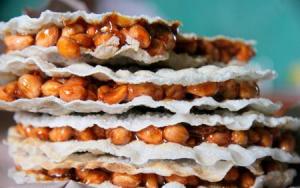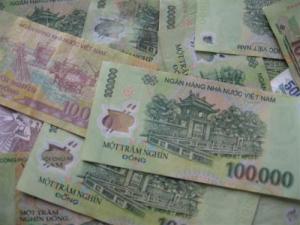Keo Cu-do: Peanut Delight

Keo Cu-do or peanut rice-paper candy is not your traditional peanut delicacy. A specialty of the central province of Ha Tinh, the peanut candy in fact used to be a laughing matter among locals who gave the nickname Cu-do to the man who invented the sweet concoction. The term is a play on “stiff penis.”
Before, it was simply called keo-lac, meaning peanut candy. Cu-do used to be a vendor of peanut candy and green tea. One day, an idea struck him that instead of the traditional wax paper used to prevent the candy from sticking, he placed rice paper instead under the peanut candy. The result was a crispier, even more delicious peanut candy.Making Keo Cu-do is quite an intricate procedure.
You have to follow the process to the letter in order to get the correct texture, consistency and taste. The main ingredients are peanut, cane molasses, malt powder, sesame and ginger.First and above all, the cane molasses have to be strictly pure. Otherwise, peanut candy made with molasses mixed with sugar will end up tasting not as good, will spoil easily, and will melt in warm temperature.Place the pure cane molasses in a pot on the stove. Cook it until it melts and start bubbling. Add the ginger, sesame and malt powder to soften the molasses. Constantly stir the mixture.
Stir in one direction to prevent peeling off of the peanut skin or sinking it to the bottom of the pot and burn. This will give the mixture a bitter taste. When it starts bubbling, add in the peanuts. The secret is adding the peanuts at the right time to get a crispy and fragrant melt taste of the recipe. When the mixture is done, pour it between two grilled rice papers.Keo Cu-do must be made not too thin or too thick. A perfect Keo cu-do recipe is one that has “the sweet taste of cane molasses; the pungency and slight spiciness of ginger; crispiness of the rice paper; and greasy, buttery taste of peaunut.”Place five to ten peanut candies in an airtight nylon bag to keep it fresh and crispy. Serve it with hot green tea for a perfect, popular dish which is considered to be the “very quintessence” of Ha Tinh Province.









